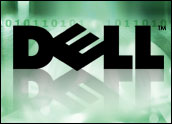
Dell turned in a strong first quarter, beating Wall Street forecasts and prompting investors to buy up its shares on the hopes that the founder’s turnaround plans are beginning to bear fruit.
Thanks largely to vigorous sales of notebook PCs in the U.S. as well as international sales, Dell posted revenues of US$16.1 billion for the quarter that ended in May, a 9 percent increase over last year and well ahead of the $15.7 billion forecast of analysts.
Net income came in at $784 million, up from $756 million a year ago. On a per-share basis, Dell earned 38 cents, a 12 percent year-over-year increase that handily outpaced the forecast of 33 cents.
Turnaround Taking Hold
Dell’s bottom line was boosted by significant cost-cutting, but the top-line growth suggests other initiatives — including the move to embrace the retail sales channel — are working as well.
“We grew significantly faster than the industry on a worldwide basis,” CEO and founder Michael Dell said. “We targeted $3 billion in annualized cost savings and have started to make progress, and we are beginning to see positive results in our performance as cost savings begin to flow.”
Dell said the quarter marked the first time in three years the company’s sales growth outpaced the overall PC industry. “We grew 11 percent in the United States while the industry was essentially flat,” he added.
One of the few dark spots in the otherwise sunny report was Dell’s warning that it has seen increasing “conservatism” among corporate buyers of information technology in the U.S., a result of economic uncertainty and something Dell expects will not change for another quarter or so.
Investors focused on the positive, however, with Dell shares up as much as 10 percent in early trading Friday. By midday, the shares were up 8 percent to $23.51.
Rebound Coming?
Growth was twice as strong overseas as in the U.S., expanding 22 percent in international markets. Sales to four emerging markets — Brazil, Russia, India and China — were up 58 percent year-over-year. For the first time, sales outside the U.S. were larger than domestic revenue, Dell said.
Michael Dell expressed optimism that IT spending would bounce back even in the U.S. before long, as corporations go ahead with deferred purchases and upgrades. “There’s a rebound effect, so we’re staying very close to our large customers,” he said.
Laptops paced the growth, with shipments of notebook computers through consumer channels up 78 percent and overall notebook shipments up 43 percent. Server shipments were up 21 percent on a unit basis — which Dell said is three times the industry average — and revenue from storage rose 15 percent. Enhanced services revenue was up 13 percent.
Since Michael Dell returned to his namesake company early in 2007 — taking the reins back from his handpicked successor — the PC maker has undergone a massive transformation.
It cut legions of jobs — 7,000 positions have been eliminated since the beginning of 2007 and close to 4,000 in the first quarter alone — and turned its once-legendary direct-sales model on its head, embracing retail outlets through deals with Wal-Mart, Staples and other retailers around the world. Dell also promised attention to the company’s customer service approach, moving some jobs that had been outsourced to India back to the U.S., for instance.
Of all the changes, simply having Dell himself back on board may have done the most to revive the lagging company, Enderle Group Principal Analyst Rob Enderle told the E-Commerce Times.
“The return of a competent founder is probably the biggest thing working for Dell,” Enderle said. “A founder can immediately gain the support of their troops and if they can do a turnaround, and the turnaround skill set is similar to the startup skill set that created the firm; they will be more effective at it. This personal interest, particularly when their name is in — or in this case is — the brand can be very powerful to investors, partners, and customers as well [as] almost instantly restoring trust in the brand.”
Apple founder Steve Jobs has orchestrated an amazing revival at that company, Enderle pointed out. “Even though his name isn’t in his brand, the simple act of returning Steve Jobs to Apple saved that company long before Steve could actually execute, buying him time that no one else, regardless of competence, would have had,” he added. “Founders can be incredibly powerful for good or bad, in this case the competence of Michael Dell coupled with his founder cachet is the most important part of Dell’s recovery.”
Catching HP?
It will take some time before it’s clear where Dell’s market share gains came from, and as a result, whether it can launch a meaningful challenge aimed at taking the worldwide PC sales crown it long wore back from current champ Hewlett-Pacakrd.
“Right now the company bleeding the most share is Acer — out of their Gateway unit — so that is likely where this share is coming from,” Enderle noted.
Though Dell said it was not done cutting, it may have grabbed much of the low-hanging fruit in terms of cost savings, Gartner Analyst Martin Reynolds told the E-Commerce Times. In addition, cutting too deeply could endanger the other key elements of the turnaround, he added.
“By all accounts, the customer experience has improved at Dell over the past few months, and that is something that needs to be protected,” Reynolds said. “That’s where the long-term benefit and upside lies. Cost cutting can only take them so far.”
The retail strategy appears to be working, but the lingering uncertainty in the U.S. is a potential stumbling block going forward, since Dell still relies on domestic sales for more of its revenue than HP, Reynolds added.
Dell also said it spent $1 billion to buy back its own shares during the first quarter and was prepared to match that amount during the current quarter.























































Social Media
See all Social Media